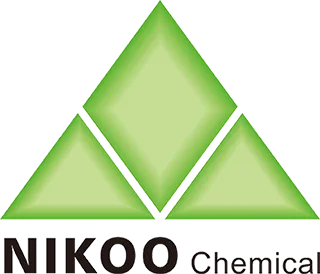A Comprehensive Guide to the Differences Between Cosmetic-Grade and Medical-Device-Grade Recombinant Collagen
I. Core Differences: Comprehensive Differences from Regulation to Application
- Regulatory Standards: The Difference in Stringency Between "Filing" and "Registration"
Cosmetic-Grade Recombinant Collagen:
Complies with the "Cosmetic Supervision and Management Regulations" and requires cosmetic filing (non-special-use cosmetic filing or special-use cosmetic registration). The filing process focuses on product safety (such as heavy metals, microorganisms, irritation, etc.) and has lower requirements for efficacy verification (usually based on raw material characteristics or basic experiments, without the need for large-scale clinical data).
Medical-Device-Grade Recombinant Collagen:
Complies with the "Medical Device Supervision and Management Regulations" and requires medical device registration (classified into Class I, Class II, and Class III based on risk level; medical aesthetic repair products are mostly Class II or above). The registration process is extremely rigorous, requiring not only comprehensive safety testing (such as biocompatibility, cytotoxicity, and sensitization) but also clinical efficacy data (such as wound healing rate and repair effectiveness) to demonstrate its clear role in medical settings.
- Ingredient Purity and Manufacturing Process: Compatibility between "Daily Care" and "Medical Repair"
Cosmetic Grade: To adapt to the feel and stability of daily skincare, it may contain moisturizers (such as glycerin), preservatives, fragrances, and other auxiliary ingredients. The purity of recombinant collagen is typically between 80% and 95% (depending on the product). The manufacturing process emphasizes "mildness" (avoiding irritation to healthy skin).
Medical Device Grade: Because it needs to come into contact with broken skin (such as wounds after cosmetic procedures), extremely high purity is required (mostly above 98%). The addition of fragrances and irritating preservatives is prohibited. The manufacturing process emphasizes "sterility" (such as aseptic filling and freeze-drying technology) and "bioactivity" (ensuring the structural integrity of the collagen to perform its repair function).
- Efficacy Positioning: The Difference Between "Basic Care" and "Medical-Grade Repair"
Cosmetic-Grade: Core efficacy focuses on daily skincare, such as moisturizing (replenishing collagen and increasing stratum corneum hydration), improving roughness (helping maintain the skin barrier), and brightening skin tone (indirectly promoting metabolism). These are considered "icing on the cake" effects.
Medical-Grade: Efficacy focuses on repair needs in medical settings, such as wound healing after cosmetic procedures (hyaluronic acid injections, laser treatments), barrier repair for sensitive skin, and promoting regeneration of damaged skin like burns and ulcers. These have a clear "therapeutic or adjunctive therapeutic" effect and require clinical validation of their repair efficacy.
Target Audience and Scenarios: Differentiation between "Healthy Skin" and "Problem Skin"
| Cosmetic-grade recombinant collagen | Medical device-grade recombinant collagen | |
|---|---|---|
| Suitable Skin Conditions | Healthy skin (no damage, no acute inflammation) | Damaged skin (post-cosmetic procedures, wounds), acute phase of sensitive skin, inflammatory phase |
| Typical Usage Scenarios | Daily skincare (serums, masks, creams, etc.) | Post-operative care at cosmetic clinics, clinical repair in hospitals (dressings, gels, etc.) |
| Frequency of Use | Suitable for long-term daily use | Must be used as directed by a doctor (mostly for short-term intensive repair, such as 1-2 weeks post-surgery) |
II. Selection Criteria: Matching Scenarios and Needs
- Daily Skincare and Preventative Maintenance: Choose Cosmetic Grade
If your skin is healthy and only needs hydration, maintaining elasticity, or preventing early signs of aging, cosmetic-grade recombinant collagen products (such as serums and masks) are sufficient. They also offer a richer texture (e.g., with added plant extracts) and better value.
- Medical Repair and Emergency Treatment for Problem Skin: Choose Medical Device Grade
Prioritize medical device grade products in the following scenarios:
- Post-cosmetic procedures (e.g., after fractional laser or microneedling): Need to accelerate wound healing and reduce post-inflammatory hyperpigmentation;
- Acute phase of sensitive skin (redness, peeling, barrier damage): Need for sterile, highly active collagen to repair the skin barrier;
- Skin damage (small wounds, ulcers): Need for clinically proven ingredients to promote regeneration.
Cosmetic-grade recombinant collagen is a "good helper for daily skincare," while medical device grade is the "hard currency for medical repair." Don't blindly pursue "higher grade" when choosing; instead, consider your skin condition and the usage scenario—choose the former for healthy skin and the latter for problem skin/post-operative conditions to maximize the efficacy of recombinant collagen.

